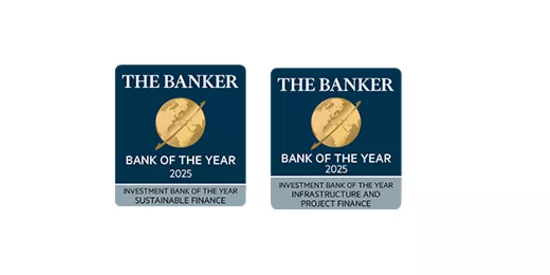
Debt Capital Markets: 2015 Review and 2016 Forecast
Year-end report from SG CIB Debt Capital Markets and Syndicate Teams.
Find more about the International Debt Capital Markets trends in 2015 and forecasts for 2016 across Bonds, Loans, Hybrids, Securitisation and Liability Management markets.
_ Download the full report in PDF
The best time to plant a tree was 20 years ago. The second best time is now.
- Chinese Proverb
Looking at volumes alone, 2015 was another outstanding year for debt capital markets, the second best for most asset classes after a record 2014, and a new record year for corporate issuance.
Volumes were once again fuelled by M&A financing, which accounted for 39% of total high-yield issuance versus 13% in 2014, and by the record-low rates seen in the first five months of the year, which have encouraged opportunistic financing from all asset classes.
The very low-rate environment in the euro market in particular, comforted by the extended asset purchase programme by the European Central Bank (ECB), attracted unprecedented volumes from US and Chinese issuers looking to diversify away from a saturated USD corporate bond market.

This combination of high volumes and high volatility has increased execution risk for issuers.
However, the second part of the year proved very challenging for both issuers and investors. For the first time in many years, issuing conditions deteriorated, with funding costs worsening between April and October due to a combination of rising long-term rates and growing volatility. Investors also paid a high price: the financial instability in Greece, the economic slowdown in China, the uncertainties surrounding the decision to hike rates in the US, and a rapid fall in commodity prices have all affected valuations in a number of sectors, and have triggered asset outflows in the riskiest asset classes, such as high yield and emerging markets.
This combination of high volumes and high volatility has increased execution risk for issuers. In the corporate space, many transactions announced between May and September had to be postponed due to market conditions, and high-yield issuance was dominated by BB-rated and repeat issuers. In the financial space, rising credit spreads benefited the covered bond market in particular, in an environment which nevertheless remained window-driven. In the Sovereign, Supra and Agencies (SSA) space, the deteriorating environment triggered some sell-off by central banks and insurers on their inventory of EUR-denominated assets, which was mitigated by the solid demand from bank treasuries and the significant cash injections administered by the ECB. With the US economy affirming its resilience, the SSA dollar market benefited from its safe-haven status as well as from favourable cross-currency swaps, attracting a higher than average proportion of European issuers.
Issuers who missed the windows of the first part of the year have no choice but to look forward. We believe the prospects for the remainder of the year and for 2016 are positive, with many investors already switching back to “risk-on” mode in a stabilised global environment. More generally, the debt capital markets have once again affirmed their resilience by delivering near- record volumes amid troubled waters. We may have shifted away from a situation where investors were often forced buyers, as they were in the euro corporate market in previous years for instance, to a situation where they can afford to be selective. But overall, the financing conditions for issuers remain extremely favourable. Those planting a tree today should not regret it over a 20-year horizon.




